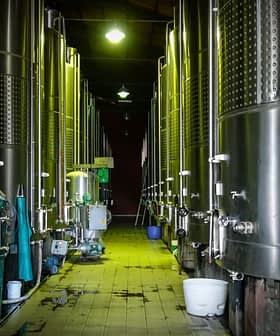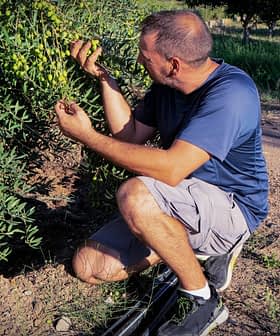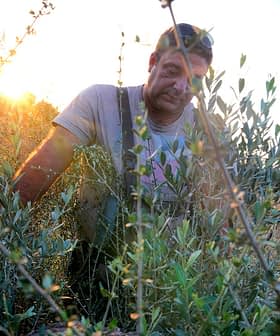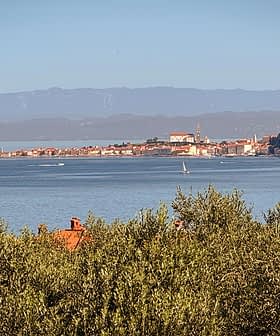Optimism Abounds in Argentina Olive Sector
Olive oil production is expected to grow by as much as 20 percent by 2019.
In Argentina, olive oil production and exports experienced significant growth last year, with production doubling and exports increasing by 155 percent. This growth was attributed to technological advancements, improved growing techniques, and government reforms that have helped the country become a major player in the global olive oil market. Argentine producers are focusing on improving quality, increasing exports, and expanding production capacity to meet growing demand in the coming years.
Olive oil production doubled and exports grew by 155 percent in Argentina last year. Producers and government officials had expected a bullish year, but this level of growth exceeded their expectations.
Olive oil produced in Argentina can compete in quality and price worldwide.
“Last year we had an excellent situation,” Frankie Gobbee, the co-founder and director of the Argentina Olive Group (AOG), told Olive Oil Times. He believes there was a perfect storm that allowed producers to enter new export markets and sell their oil for prices that were higher than normal.
“We produced a very high volume of olive oil in Argentina and received good prices as well,” Gobbee said. “The Euro was also very high and all the major production countries [such as Spain and Italy] produced lower volumes. These conditions gave us a very excellent price for our oil and good opportunities to supply a lot of new international accounts.”
Production in Argentina grew to a record-high 37,500 tons, of which more than 98 percent was virgin or extra virgin olive oil. Argentina has become the largest producer of olive oil in the Americas and the eighth largest producer in the world.
Francisco Corredoira, president of the Catamarqueña Olive Association (Asolcat), attributed the increased output to technological advancements and better growing techniques.
“Today, olives destined for the production of oil have to be machine-harvested, in order to be profitable,” he said. Traditionally, producers could only grow 250 trees per acre, which were harvested by hand. Now that figure has risen to 865 trees per acre.
Exports by volume grew to 30,000 tons and were outpaced by their growth in value, which reached US$152 million.
Néstor Roulet, the secretary of added value at the Argentinian Ministry of Agroindustries, said that the olive sector has been growing since 2016 and its most recent growth has been partially stimulated by government reforms.
© Olive Oil Times | Data source: International Olive Council
“Since 2016 there has been a positive change in the foreign trade of the regional economies, after five years of consecutive falls,” Roulet told Olive Oil Times. “In 2017 this trend is being strengthened, accompanied by the implementation of national programs and tools that collaborate in the development of a more competitive olive industry.”
Roulet is referring to measures by the government, which loosened strict currency controls on trading in United States dollars, and measures enacted by his branch of the Ministry of Agroindustries. The Added Value Secretariat has introduced a number of initiatives to help improve the competitiveness of small and medium-sized producers and differentiate Argentine agricultural products from their competitors.
Among the programs that were created by the Secretariat last year was a “Made in Argentina” initiative to promote agricultural products abroad; a program to increase organic farming and production methods, and plans to institute a protected designation of origin program similar to that of Italy.
Improving quality is the creed of Gobbee. To this end, AOG has been taking steps on the agricultural front, such as removing the use of pesticides from the growing process.
“With more certification and increased quality, we think that the sector can continue to grow quickly,” he said.
Improving quality will allow Argentine producers to add more value to their bulk extra virgin olive oil exports. Through bulk oil sales to private labelers, Gobbee believes the sector can compete with Mediterranean producers in the long term.
“Last year, Argentina was the third largest exporter of bulk oil to the United States,” Gobbee said. “What we are doing right now is to give more value to bulk olive oil exports, since we see that in the US, private labeling is growing every year.”
AOG, which is the largest olive oil producer in South America, has also been focusing on customizing blends for specific retailers. Gobbee said that by doing this, retailers get consistent flavors that match what their customers demand and provide an option for Northern Hemisphere producers to refresh their olive oil stocks in the offseason.
“In 2017, many buyers from Italy and Spain, including large brands such as Borges and Deoleo, came to see the New World olive oil and we’re working on making contracts with them,” Gobbee said.
Gobbee believes the challenge for Argentine producers will be to continue producing olive oil more quickly than they currently are. This will mean new investments in milling technology as well as the planting of new olive groves.
“Production companies here are very worried about trying to cover the volume and the demand this year for the extra virgin olive oil because it is growing every year,” he said. “But they are getting more investment and planting more.”
He predicts that in the next couple of years, Argentina will be producing between 42,000 and 45,000 tons of oil. The question will be whether or not demand for Argentine oil grows more quickly than production.
“I believe that 2019 is going to be another historically high crop for Argentina, which is really good for us because we sell all of the oil that we produce,” he said. “We hope in 2020 or 2021 we can have at least a reserve of oil. People here are investing more and more in tanks because they can see that the crops are growing in an on-off cycle.”
Alejandro Ovando is the director of IES Consultores, which has studied the olive oil industry in Argentina and recently released a report on the growth of the sector. He is optimistic about the future.
“We expect that in the current year the production of olives and olive oil will continue to expand and will grow for the third consecutive year,” Ovando told Olive Oil Times. “The olive harvest is promising since it is not expected to be an overly rainy year, which will favor the plantations and allow for a greater harvest and quality.”
Ovando contends that these favorable conditions will, in turn, increase the added value of the products on the international market.
“Olive oil produced in Argentina can compete in quality and price worldwide,” he said. “There is no chance that [external factors such as better harvests next year in Mediterranean producing countries] can stop the growth of the sector in the international market.”









